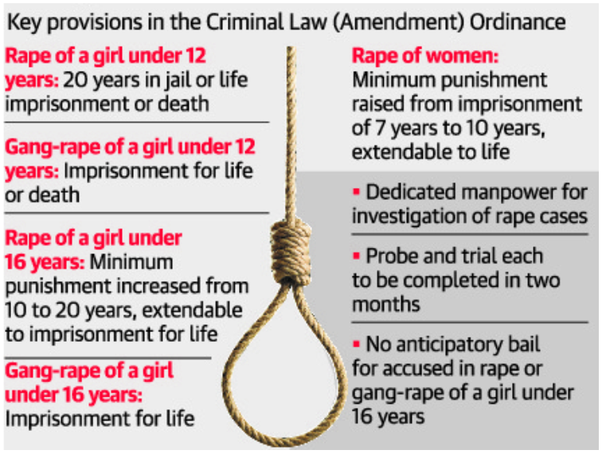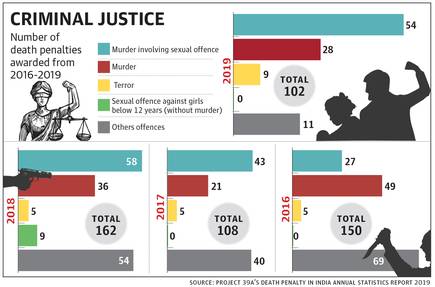Relevance: Mains: G.S paper II: Polity
Context:
- The Centre’s application in the Supreme Court for additional guidelines regarding the execution of condemned prisoners betrays a needless impatience to hang the four convicts facing the gallows for the rape and murder of ‘Nirbhaya’ in 2012.
• The Ministry of Home Affairs essentially seeks the incorporation of measures aimed at reducing the scope for death row convicts to adopt dilatory tactics.
Demanding speedy punishment process:
- These guidelines were undoubtedly aimed at protecting the constitutional rights of prisoners in the context of a sound body of jurisprudence that maintains that such rights extend right up to the moment of their execution.
• The court was anxious about enforcing their right to be informed about the scope for filing petitions for clemency, for being given legal assistance in drafting them, and for exploring judicial remedies even after their appeals for mercy are rejected.
• Further, the 14-day time lag between the closure of the clemency route and their hanging is aimed at preventing secret executions.
• The court was concerned about the right of the convicts’ family members to be informed, as well as the time needed by the prisoners for settling their affairs and preparing themselves mentally.
• It is strange that the government wants the Supreme Court to frame a rule imposing a seven-day limit on the time that convicts have to file a mercy petition after a death warrant is issued.
• And that courts, governments and prison authorities should all be mandated to issue death warrants within seven days of the rejection of mercy petitions and to carry out the sentence within seven days thereafter.
• To believe that these are matters that contribute to substantive delay in carrying out death sentences is misconceived.
• Nothing prevents the government from introducing rules to address such situations.
• On the need for a time limit for filing curative petitions, the government is right in believing that the absence of such a stipulation gives scope for convicts in the same case to take turns to file such petitions.
Way forward:
- However, there is no sign that the apex court delays disposal of curative petitions. If and when one is filed, it results in no more than a few days’ delay.
• In a country that unfortunately retains the death penalty, there is no excuse for delaying the disposal of any petition, either in court, or before constitutional functionaries.
• Nor is there any need to expedite executions by revisiting sound guidelines. As the death penalty is limited to the “rarest of rare” cases, nothing is lost if those facing execution are allowed to exhaust all possible remedies.




